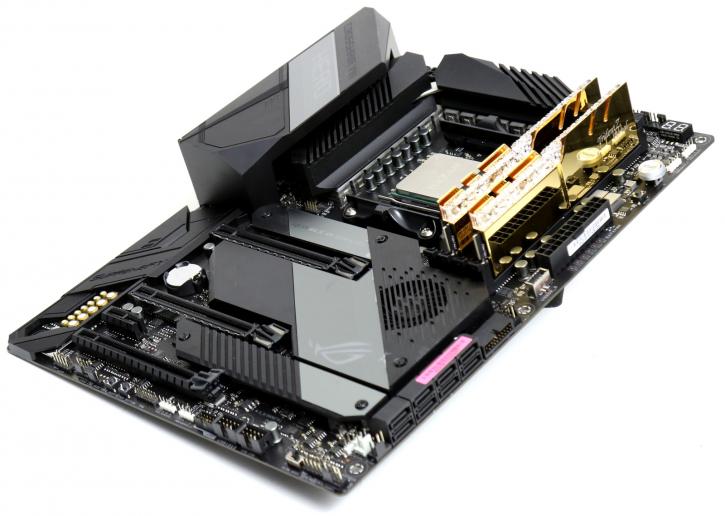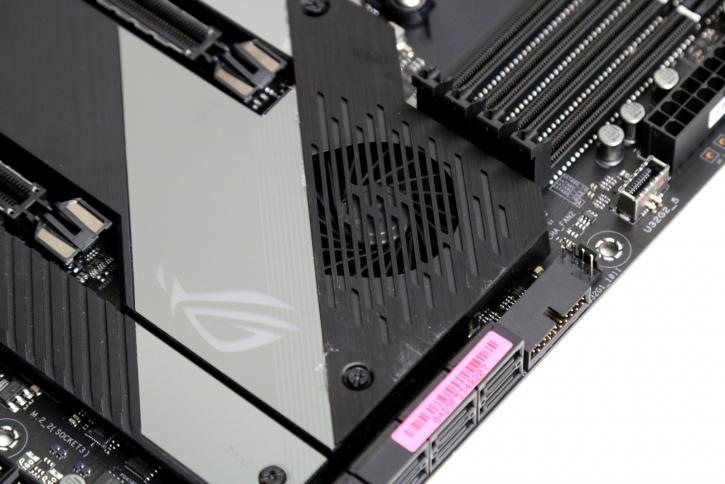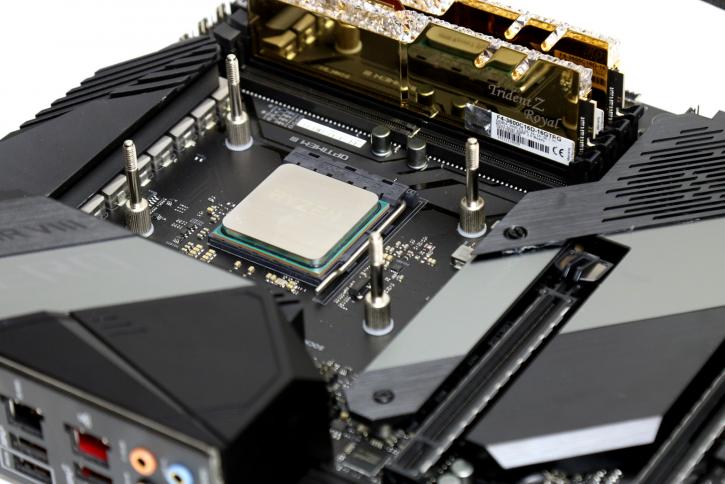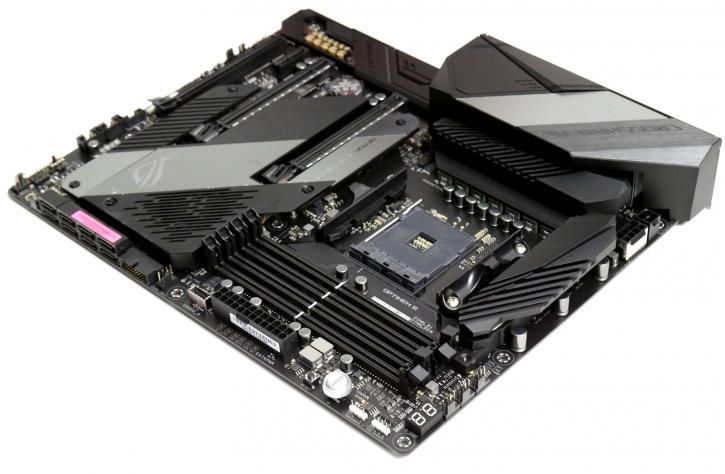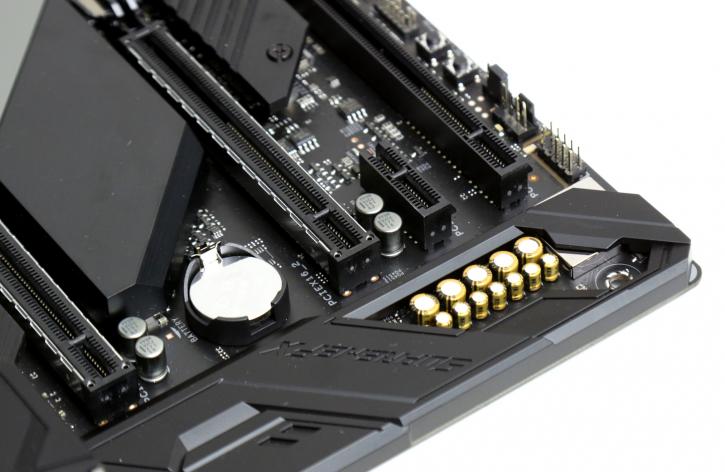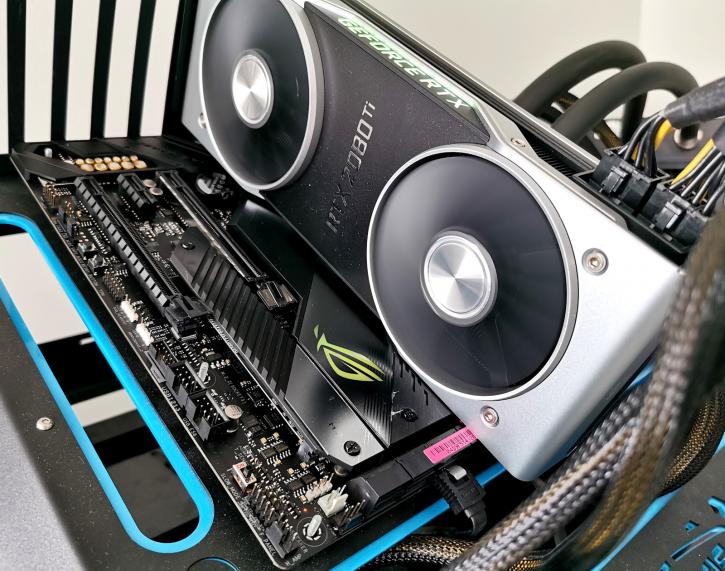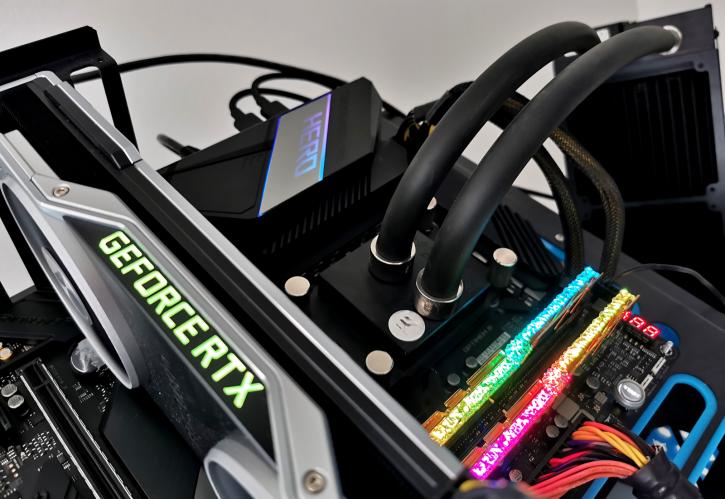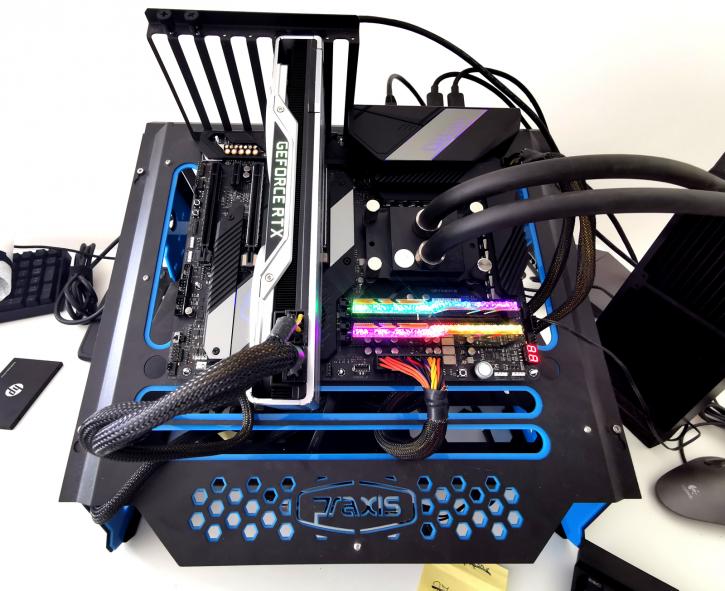Product Showcase
Check the heatsinks, pretty cool design. Take note of the metal covers on the two primary x16 PCI-Express slots as they show off a bit. They provide sturdier and stronger slots, handy for very heavy graphics cards.
Obviously the elephant in the room, the X570 motherboards mostly all have an active fan for the chipset. This ASUS one I rate as very silent. Most manufacturers will also offer RPM setting available from the BIOS to regulate this at your preference.
Underneath the chunky VRM heatsinks, the power demands of higher core counts are dealt with by 14 IR3555 power stages spread across 7 phases. The Hero’s power circuit is inspired by the multi-phase firing modes that are inherent to some buck controllers, but there’s a novel twist. Built-in ‘activate multiple phases at the same time’ features are designed to provide a much-needed current boost when the power supply is dealing with a heavy transient. However, they do not engage until a large deviation occurs, which creates additional complications for regulation and response times. In comparison, the teamed approach used on the VIII Hero is preemptive because each phase has two power stages hardwired to rapidly dispatch current.
Two x16 and a PCIe 4.0 x1 slots. One graphics cards used would configure at a full x16 PCIe Gen 4.0 lanes. If you go SLI your cards will be configured as x8/x8 though. The lower black x1 slot.
The audio chip used is the Realtek ALC1220 that offers 7.1-channel High Definition audio, it has been enhanced with some higher grade capacitors. You can spot Nichicon audio grade (or at least something similar looking) fine capacitors, suited for high-grade audio equipment to provide rich sound in the bass range and clearer high frequencies. There's little else to say really, the audio solution looks lovely. A 4-pin and 8-pin connector to power that processor of yours, just using the 8-pin connector is plenty though, in fact using just one 4-pin would do the job already. The motherboard has a 12 phase power delivery design for the processor based on digital power controllers.

